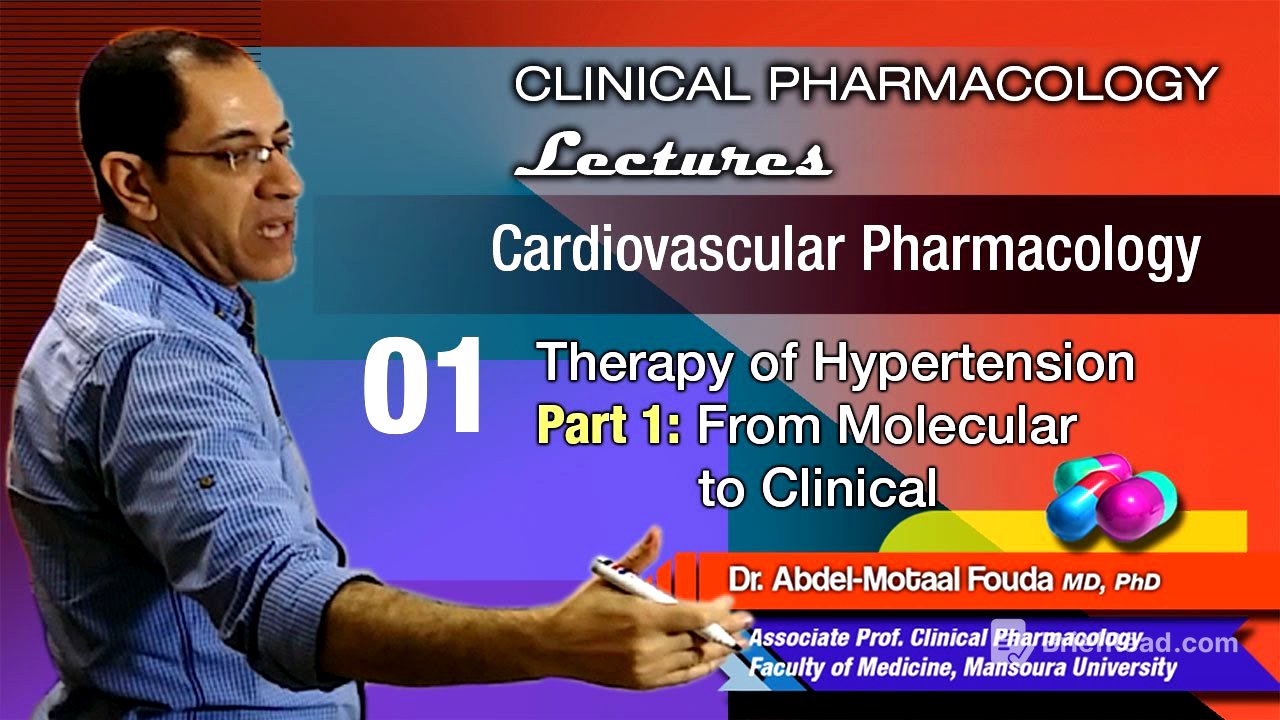TLDR;
This video serves as an introduction to hypertension, covering key aspects such as the mechanisms of vasoconstriction and vasodilation at the cellular level, the classification of hypertension based on etiology, type, and grade, and initial non-pharmacological management strategies. It emphasizes the importance of understanding ion dynamics, particularly calcium's role in vasoconstriction, and introduces the different categories of antihypertensive drugs, focusing on lifestyle modifications and the initial steps in pharmacological treatment.
- Understanding vasoconstriction and vasodilation at the cellular level.
- Classifying hypertension by cause, type, and severity.
- Initial non-drug treatments for hypertension.
Introduction to Hypertension [0:05]
The video introduces the topic of hypertension, noting it will be covered in multiple videos due to its complexity. Before discussing hypertension specifically, the speaker wants to discuss the basic mechanisms of vasoconstriction and vasodilation at the cellular level, which will be important for understanding how different drugs work.
Cellular Mechanisms of Vasoconstriction and Vasodilation [0:28]
The discussion begins with an explanation of vasoconstriction and vasodilation at the cellular level within blood vessels. Key ions like calcium, sodium, magnesium, and potassium are discussed in terms of their intra- and extracellular concentrations and their roles in maintaining vascular smooth muscle cell stability. Calcium influx leads to vasoconstriction by interacting with calmodulin, which then activates myosin light chain kinase, leading to the contraction of actin and myosin filaments. Conversely, magnesium and potassium help maintain cell stability and promote vasodilation.
Role of Calcium in Vasoconstriction [3:56]
The critical role of calcium in vasoconstriction is highlighted. Calcium entry into vascular smooth muscle cells triggers a cascade involving calmodulin and myosin light chain kinase, ultimately leading to vessel constriction. The speaker also revisits concepts from previous lectures on general pharmacology, autonomic nervous system, and the renin-angiotensin system, linking them to the current discussion on hypertension. Activation of alpha-1 receptors, V1 receptors by ADH (Vasopressin), angiotensin II via AT1 receptors, and endothelin via endothelin receptors increases intracellular calcium, promoting vasoconstriction.
Counteracting Vasoconstriction [8:57]
The discussion shifts to factors that prevent vasoconstriction, emphasizing the roles of magnesium and potassium as "housekeepers" that maintain vascular smooth muscle cell stability. The speaker also discusses beta-2 receptors, which, when stimulated, increase cyclic AMP (cAMP), preventing the phosphorylation of myosin light chain kinase and promoting vasodilation. Prostaglandin E2 also increases cAMP, leading to vasodilation. Additionally, M3 receptors increase nitric oxide, leading to increased cyclic GMP (cGMP), which also promotes vasodilation.
The Exception to the Rule: Myosin Light Chain Kinase [12:58]
A critical distinction is made regarding myosin light chain kinase. While increased cyclic AMP leads to vasodilation in smooth muscle cells by preventing myosin light chain kinase phosphorylation, the opposite occurs in cardiac muscle cells. In cardiac cells, increased cyclic AMP leads to contraction, explaining why beta-receptor stimulation can cause vasodilation in blood vessels but increased contractility in the heart.
Defining and Classifying Hypertension [15:20]
The lecture transitions to a clinical discussion of hypertension, emphasizing the importance of specifying "systemic" or "arterial" hypertension. Normal blood pressure is defined as 120/80 mmHg, with a systolic range of 90-140 mmHg and a diastolic range of 60-90 mmHg. The concept of pulse pressure and its role in calculating mean arterial blood pressure (MAP) is introduced, with an optimal MAP range of 65-110 mmHg, which reflects tissue perfusion. Hypertension is classified based on etiology (primary/essential vs. secondary), type (systolic, diastolic, or mixed), and grade (stages 1, 2, and 3).
Grades and Types of Hypertension [20:06]
Hypertension is further divided based on type: systolic, diastolic, or mixed, with both systolic and diastolic hypertension posing risks, though systolic hypertension is more concerning in older adults due to the risk of stroke. The British Hypertension Society's grading system is presented, categorizing hypertension into stages 1, 2, and 3 based on systolic and diastolic blood pressure ranges. The distinction between hypertensive urgency (BP >180/110 mmHg without end-organ damage) and hypertensive emergency (BP >180/110 mmHg with end-organ damage) is emphasized, guiding treatment approaches.
Target Blood Pressure and Special Conditions [25:51]
The lecture addresses target blood pressure levels, emphasizing that the goal is generally below 140/90 mmHg, regardless of age. However, for patients with diabetes or renal disease, the target is lower, at 130/80 mmHg. The concepts of labile hypertension (fluctuating blood pressure) and white-coat hypertension (elevated blood pressure in clinical settings due to stress) are introduced, with recommendations for multiple blood pressure measurements and home readings to avoid misdiagnosis.
Initial Steps in Hypertension Treatment [32:21]
The initial approach to treating hypertension involves non-pharmacological interventions, including salt restriction, smoking cessation, stress reduction, weight reduction, exercise, control of risk factors, and avoiding certain medications. Specific recommendations include reducing sodium intake, increasing potassium and magnesium intake, quitting smoking, managing stress, losing weight, engaging in regular exercise (at least 30 minutes daily), controlling other risk factors like diabetes and hyperlipidemia, and avoiding vasoconstricting medications and licorice.
Pharmacological Treatment: First-Line Agents [41:56]
If non-pharmacological measures are insufficient after a two-week trial, pharmacological treatment is considered. Antihypertensive drugs are divided into first-line and second-line agents based on their popularity. First-line agents include ACE inhibitors, beta-blockers, calcium channel blockers, and diuretics. The selection of the appropriate drug depends on the patient's specific condition.
Review of Beta-Blockers and Diuretics [45:44]
The lecture reviews beta-blockers and diuretics, two classes of antihypertensive drugs. It addresses whether there are differences in efficacy among different beta-blockers (all are equally effective) and revisits their mechanisms of action. Beta-blockers are not used as monotherapy but as part of a combination therapy. Selective beta-blockers are preferred to minimize side effects. Beta-blockers are particularly beneficial for patients with hypertension and co-existing cardiac conditions or those with hypertension due to pheochromocytoma. Similarly, diuretics are not used as monotherapy but are beneficial for patients with hypertension and fluid overload. While thiazide diuretics were previously recommended as initial therapy, current practice favors calcium channel blockers or ACE inhibitors. The mechanisms by which diuretics lower blood pressure are also reviewed.
